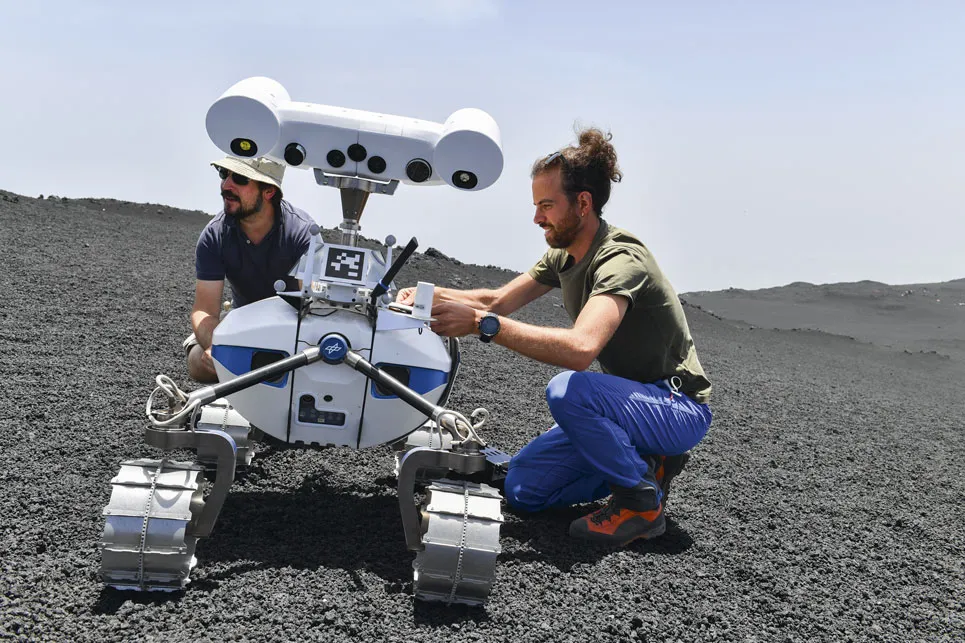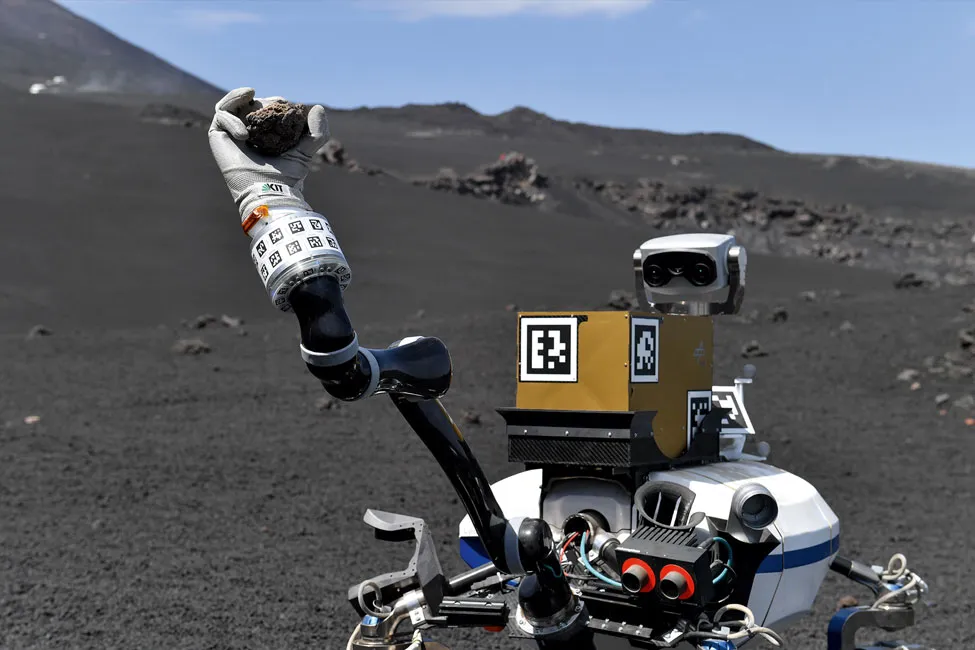Anyone who has followed our efforts to explore other planets over the last few decades will have realised the importance of robots. They’re our mechanical eyes and ears on distant worlds, and have allowed us to see places that would have otherwise remained shrouded in mystery. Perhaps this is why the landing of each new NASA rover on Mars draws millions of viewers online.
Recently, however, most of the headlines have been about the imminent return of humans to the Moon. So with people once again venturing further out into space, will robotic explorers start to fade in importance?
Not at all. The fact is robotic explorers are set to become more important than ever. “There are some places in the Solar System you can’t send humans, Venus, for example, or some moons of Jupiter or Saturn,” says Prof Alin Albu-Schäffer from the Institute of Robotics and Mechatronics at the German Aerospace Center, Munich. “They’re just too far away and too hostile for humans. So, youhttps://www.sciencefocus.com/space/mars-facts-figures-fun-questions-red-planet/ know, robots will be very important.”
And it’s not just in these remote places that robots will find their purpose. “Before you have humans on Mars, we’ll have robots preparing infrastructure,” says Albu-Schäffer. The robots will almost certainly help astronauts to construct lunar bases too.

Albu-Schäffer is part of a German-led project called ARCHES. Short for Autonomous Robotic Networks to Help Modern Societies, ARCHES brings together a team of experts from two of Germany’s Helmholtz Research Centres, the German Aerospace Centre (DLR) and the Karlsruhe Institute of Technology (KIT), as well as the European Space Agency (ESA), in order to develop networks of robotic systems that work in collaboration to explore planetary landscapes.
Instead of single envoys that await orders from operators on Earth, tomorrow’s planetary robots will work in teams, communicating between each other with their artificial brains, solving problems and achieving goals.
To test such a networked system, Albu-Schäffer and others recently completed an ‘analogue mission’ on the slopes of Mount Etna, Sicily.
With its desolate landscape of fine, granular surface material and solidified lava flows, the volcano is a good substitute for the Moon. Indeed, it has a history of being used for such tests.
A previous Helmholtz expedition took to the slopes in 2017. The Robotic Exploration Under Extreme Conditions (ROBEX) mission tested novel, innovative technologies for energy exchange, data transfer and as much autonomy as possible. It demonstrated that these technologies could be used for future exploration missions, with ARCHES now building on these findings and refining them.

The ARCHES analogue mission took place from 13 June to 9 July 2022. Three different scenarios were undertaken. In the first, called GEO I, two rovers (LRU1 and LRU2) and a flying drone explored an area of terrain using as much onboard automation as possible.
The drone mapped the area from the sky, while the rovers wandered around conducting scientific examinations. A central stationary ‘lander’ supplied power to the rovers and acted as a Wi-Fi station, allowing them to communicate with each other.
“If the rover got stuck because of some bigger rocks, for example, then the flying system would make a map and recognise passages where the rover can pass,” says Albu-Schäffer. The drone would then exchange that data with the rover, so that it could replan its route.
A control centre in the nearby city of Catania monitored the robots’ progress, but, as far as possible, the rovers made their own artificially intelligent decisions about where to place scientific equipment, take soil samples and conduct other geological investigations.
On Mars or the Moon, such results would be used to decide which areas make the best landing places for human missions. For example, the data could reveal places to find water, or the location of the best materials from which to make building materials or 3D-printedparts. Such construction and resources extraction would significantly reduce the cost of human missions by removing the need to bring all these things from Earth.

In the second scenario, GEO II, two more rovers joined the DLR network. One was the Interact rover, designed by ESA’s Human Robot Interaction Lab. This four-wheel rover is operated remotely and has been designed with a robotic grabber hand. The other was a centipede-like crawler, supplied by KIT. Its novel crawling system of locomotion meant that it could handle much tougher terrain than the wheeled rovers. It also served as a communications relay between the lander and the ESA rover, extending the latter’s range.
Over a four-day period, the ESA rover selected rock samples and delivered them to the lander. The Interact rover was controlled remotely by a human operator, the ESA astronaut Thomas Reiter, who was stationed in Catania, around 23km (14 miles) from Mount Etna.
This setup mimicked the idea of having an astronaut on the Gateway station (to be constructed in lunar orbit), operating a rover on the surface of the Moon. To further enhance the simulation and give a sense of there being a mission control on Earth, ESA’s European Space Operations Centre in Darmstadt, Germany, monitored and coordinated the rover’s operations with Reiter in Sicily.
“A simulated mission like this is essentially a roleplay in which it’s very important that the in-scenario players experience complete immersion,” says Kjetil Wormnes, ESA’s project manager for the analogue mission.

For maximum immersion, the team even set up a one-second time delay in the signal from Reiter to the rover, the same delay they expect to see between Gateway and the lunar surface.
The attention to detail was worth it. “It was a challenging setup, but the systems worked extremely well and we learned a lot about operating a rover on the Moon that can help us when we do this for real in the future,” says Wormnes.
The final scenario was called LOFAR and involved the rovers working together to place four low-frequency radio receivers in the optimal positions to create an array. The receivers weren’t dummies but working models. After deployment of the receivers, the astronomers in Catania used them to monitor Jupiter. They even picked up a radio burst as the moon Io passed through the planet’s magnetic field.
It has long been a dream of astronomers to construct a large radio telescope on the far side of the Moon, where it’ll be shadowed from the noise of terrestrial radio stations. But to do this in a place where there’s no direct contact with Earth will require automatous robots and astronauts in the lunar orbit to oversee the construction.

All in all, 50 people were involved in trials from the different institutions. As a result, team building became another aspect of the success. “There was a lot of community building because we had these people working together and building the building blocks for such space missions. So I think having this campaign with the researchers for four weeks up there on the mountain was priceless,” says Albu-Schäffer.
The advances made by the ARCHES project extend beyond space exploration. They can also help in the robotic exploration of deep-sea environments on Earth, and in places where it would be too dangerous for humans to work, for example, dismantling nuclear power plants or inspecting damaged buildings after a disaster.
- This article first appeared in issue384ofBBC Science Focus –find out how to subscribe here
Read more about robots: